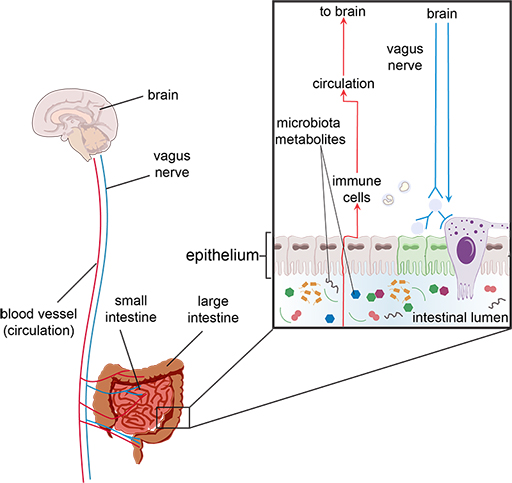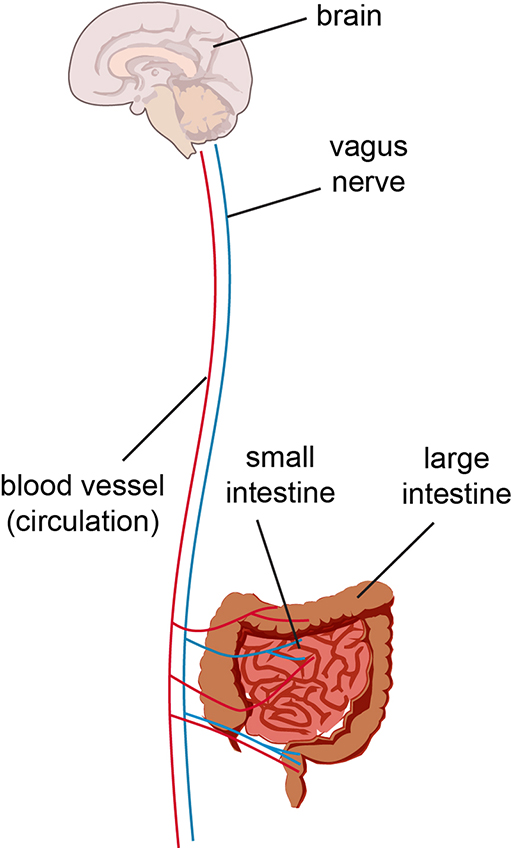2.6.1 Neural pathway – the microbiota-gut-brain axis
The nerve cells located in the wall of the GI tract form the enteric nervous system (ENS), which supplies the entire length of the gut. The long projections of these nerve cells extend out of the gut wall and merge to form the vagus nerve, which travels all the way up to the brain (Figure 13).
Fun fact: another brain?
The ENS is often referred to as ‘the second brain’ or ‘the brain in your gut’ because of the extensive number of nerve cells located in the gut wall. The ENS contains more than 100 million nerve cells!
The ENS can function independently, but it can also function in coordination with the brain, and this is often referred to as the gut-brain axis. The gut-brain axis is vital for regulating appetite, metabolism, and gastrointestinal function (e.g. gut motility).
As you learnt earlier, the gut microbiome produces metabolites, such as SCFAs, which pass into the cells of the gut wall. These metabolites then stimulate the vagus nerve, to send signals to the brain, such as hunger signals. However, this communication with the vagus nerve is bidirectional, and the brain can send signals back to gut to modify gut motility and other functions. This is termed the microbiota-gut-brain axis, and is shown in Figure 14.

-
Question 10
Earlier you learnt a way that the microbiome can directly relay information to the brain. What were the metabolites involved in this direct mechanism called?
-
Short chain fatty acids (SCFA)s. The SCFAs produced by the microbiome can cross the gut wall to enter the bloodstream and travel to the brain. These SCFAs can modulate brain and behaviour to alter brain function, such as cognition (Chen, Xu and Chen, 2021).
In the next section, you’ll learn about other ways the gut microbiome can influence the brain.

